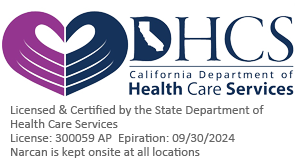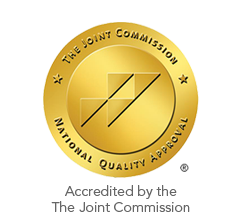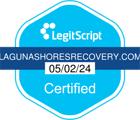Orange County Residential Treatment Center
Our Orange County detox center helps our clients acquire the skills needed to prevent relapse in the future. Don’t wait to reap the benefits of our residential drug treatment in Dana Point.

Addiction Treatment Statistics in California
According to the Substance Abuse and Mental Health Services Administration (SAMHSA), in 2019, there were approximately 2,400 individuals in Dana Point, CA who sought treatment for substance abuse. In terms of specific substances, alcohol was the most commonly reported primary substance of abuse, followed by opioids and marijuana. The age group with the highest rate of substance abuse was individuals aged 18-25.
Furthermore, a study by the Orange County Health Care Agency found that opioid overdose deaths in Orange County (where Dana Point is located) have increased by 88% since 2000. In addition, there has been an increase in emergency room visits related to opioid misuse in the county.
Addiction remains a significant issue in Orange County and the surrounding area. It is important for individuals struggling with substance abuse to take advantage of our Orange County addiction treatment options.
Types of Addiction Rehab Treatment Programs
Two main types of programs for treating those who are suffering from an addiction to drugs are called:
- Inpatient Residential Treatment
- Outpatient Treatment Programs
Outpatient treatment is more geared towards those who need help with addiction but also must maintain a full-time job, go to school, or have a lot of social support at home to help them throughout the stages of treatment. Inpatient programs are beneficial for people who require intensive, round-the-clock care.
Be Brave. Get Help.

What Is A Residential Treatment Center (RTC)?
In cases where more intensive, around-the-clock care is required, residential treatment is usually the gold standard for drug addiction treatment. Inpatient drug and alcohol rehab programs can be carried out either on a long-term or short-term basis, depending upon the severity and longevity of the addiction.
Also known as residential treatment, inpatient addiction rehab occurs in a facility where care is provided 24 hours a day in a non-hospital setting. A medical professional is on hand to help with medically managed withdrawal, as well as other professionally trained addiction counselors, social workers, and psychologists. These settings are often referred to as being a therapeutic community.
What To Expect During Inpatient Rehab
Upon arrival at the facility, you will undergo a thorough evaluation to determine your specific needs and create an individualized treatment plan. This plan will be regularly reviewed and adjusted based on your progress.
The first action taken in any type of residential stay is detoxification to rid the toxins from the body. This is accomplished by withdrawal of the substance causing the addiction, accompanied by specific medications to ease the pain, discomfort, and sometimes dangerous side effects that often occur with detoxification.
The daily schedule at an inpatient rehab facility typically includes individual therapy, educational workshops, and recreational activities. These activities are designed to help individuals address underlying issues that may have contributed to their addiction and learn coping skills to maintain sobriety.
During inpatient rehab, individuals can expect to receive 24-hour care and support from a team of medical professionals, including doctors, nurses, therapists, and counselors. The main goal of inpatient rehab is to provide a safe and structured environment for individuals to focus on their recovery.
Another important aspect of inpatient rehab is the emphasis on building a strong support system. This includes developing relationships with peers who are going through similar experiences and participating in support groups both during and after treatment.
In addition to therapy and activities, individuals in inpatient rehab can also access medical care if needed. They may also receive medication-assisted treatment (MAT) for certain types of addictions or co-occurring mental health disorders.
As the end of the program nears, individuals will work with their treatment team to create an aftercare plan that includes ongoing support and resources to help them maintain sobriety once they leave the facility. This may involve participation in outpatient therapy or attending support groups such as Alcoholics Anonymous or Narcotics Anonymous.
It’s important for individuals entering inpatient rehab to understand that recovery is a lifelong journey and that it takes time, effort, and commitment. Inpatient treatment in Dana Point provides a safe and supportive environment for individuals to begin this journey toward lasting recovery.
How Long is Inpatient Rehab?
The group and interpersonal activities performed during inpatient rehab help to examine some of the destructive behavioral patterns and damaging self-concepts that lead to the addiction. This leads to better ways of interacting socially and internally.
Short-term residential treatment can be just as intensive as a long-term treatment but of briefer duration. This treatment period is based on the 12-step approach to addiction recovery. It usually involves a 3 to 6-week stay, followed by engagement in outpatient therapy.
The Benefits of Inpatient Rehab
There are many benefits associated with inpatient rehab, but probably the most important one is the existence of structure. The days and evenings are structured around individual and group therapy for substance abuse, recreational activities, and educational workshops. Less free time and more structure mean less time thinking about drugs and how to get them, reducing the likelihood of relapse in the future.
Another great thing about inpatient treatment is the professional supervision and counseling available. This is especially critical during the detoxification period when constant monitoring and medication management are so important.
While you are in a residential setting, whether it’s long- or short-term, you are away from the negative influences and people that may cause you to relapse. Phone calls and visitors are generally limited or closely monitored for your benefit. This atmosphere lets you focus on yourself, your needs, and your recovery, away from the stressors and distractions of daily life.
During a stay as an inpatient, new friendships are forged with others who understand what you are going through. These friendships can offer the support you may need now and in the future.
Since all of the meals are served to you during your stay, you will be eating a more balanced diet. The healthy foods will give you the strength to undergo withdrawal and continue to help you during recovery.
You will find that the support you receive during inpatient rehab will provide you with the tools you’ll need after leaving. These tools and strategies learned during rehab will help in avoiding relapse and resisting cravings for drugs.
Choosing an Inpatient Addiction Rehab Facility
Keep in mind that inpatient addiction rehab stays have a higher success rate for lasting sobriety. Consider the cost, the location, the amenities, and the treatment types available. Recovery is possible and Laguna Shores Recovery can help.
Our drug rehab programs focus on personalized treatment plans and understand and value the importance of individualized goals in the therapeutic setting. We believe strongly in family support and encouragement and provide opportunities for family therapy and contact through on-site visits, home passes, telephone calls, and other modes of communication.
Find Healing at Our Orange County Residential Treatment Center
Our facility is located in a peaceful and nurturing environment, providing a safe space for individuals to focus on their recovery journey. Our highly trained staff is committed to supporting each individual on their path to sobriety.
If you or a loved one is struggling with drug addiction, we invite you to find healing at our Orange County residential treatment center. Contact us today to learn more about our services and start your journey towards a healthier life.

 Matthew Beck B.A, M.A, LMFT
Matthew Beck B.A, M.A, LMFT 


